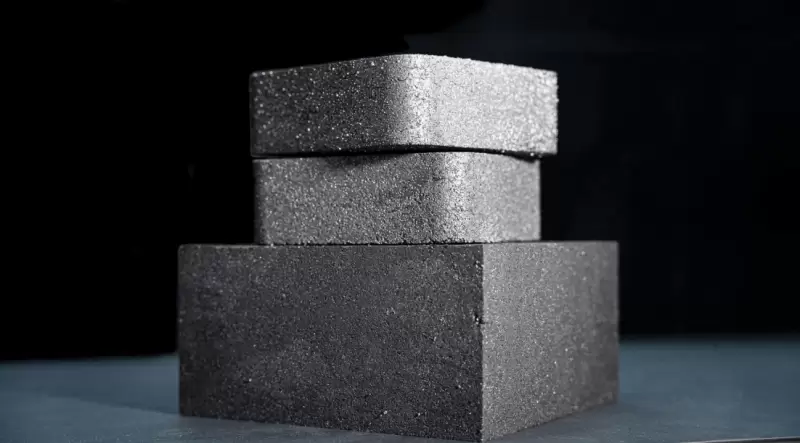An innovative form of energy storage could give coal-fired power plants a new and entirely green lease on life.
For a world looking for green and renewable energy sources, solar and wind power have been transformative. Non-polluting and increasingly more efficient, they are making fossil fuels obsolete as a generator of base-load electricity.
Although these sources of energy are intermittent — the sun is not always shining and the wind is not always blowing — this problem has been addressed with batteries, which store excess power until it is needed.
However, one University of Newcastle engineer has developed an alternative approach.
Professor of Material Science Erich Kisi’s innovation is a technology he calls Miscibility Gaps Alloy (MGA): stackable blocks that can store heat energy for when it is ready to be used, at which time it can be released safely and pollution-free.
“It doesn’t burn anything; it doesn’t consume anything,” Kisi told create.
“There’s a small amount of embodied energy when you manufacture it, but it has a fairly long predicted lifetime, and it is completely recyclable at the end of life.”
The technology consists of alloys that melt and freeze to store and release heat and a matrix to preserve the structure of the material.
“The matrix component holds everything together in a solid, stops the phase change material from leaking out and moves the heat around in the system,” Kisi said.
“It’s macroscopically solid, and the matrix phase remains solid, but about 50 per cent by volume of it will melt and then freeze during discharge — so melt during charging and freeze during discharging.”
The matrix is made from a graphite-based material, with various metals chosen for their melting points — as well as a few other properties, such as stability, inertness and commercial availability.
“We have to make sure we are not using any toxic materials, we’re not using any precious metals, we’re not using rare earth materials that react with anything they touch,” Kisi said.
“We have various metals that we can put in there that melt in those sorts of ranges. Zinc melts at 419 [degrees Celsius], aluminium melts at 660, magnesium melts at 650. Those types of common metals that you can use or alloys of them and other materials.”

Retrofitting power stations
One significant potential use for the technology is in retrofitted coal power stations — using the existing infrastructure to store and distribute electricity but without the carbon emissions associated with burning fossil fuels.
“In a coal-fired power plant, you would use all of the infrastructure except the boiler,” Kisi said.
In place of the boiler would be a thermal storage energy unit, which contains the MGA blocks that store energy from renewable sources. Electric resistance heaters can be used to convert electrical energy — say, from a solar array — to thermal energy, at close to 100 per cent efficiency.
“Then once it’s converted into heat, it gets transferred to the blocks,” Kisi said.
“You can transfer it to the blocks by heating a heat-transfer fluid and flowing it through pipes or other heat transfer infrastructure, or indeed if you have a solar concentrator instead of a photovoltaic array, then you can absorb the energy directly as concentrated sunlight.”
At the newly adapted power plant, the blocks are used to heat water in the same manner as for traditional power generation.
“You use the existing water pumping system and pressure system, you put the feed water into the storage, the water boils, becomes steam and then becomes super-heated just before exit, and then that’s passed directly to the turbine,” Kisi said.
“During dispatch, we are discharging most of our energy at a relatively fixed temperature. So you can match that to the operating point of a turbine or an industrial process that you want to supply heat for.”
Kisi said MGA blocks are best equipped to complement existing battery technology, not to replace it. The respective forms of energy storage have different strengths.
“It’s less expensive than batteries,” he said. “It doesn’t have the very quick response time the batteries have, so it’s not competitive there.”
Kisi describes the future as “exciting but daunting”.
His company, MGA Thermal, is undertaking trials of the technology in Europe and has received an Australian government Modern Manufacturing Initiative grant in collaboration with Toshiba.
“We’re ramping up our production to the point where we’ll be able to produce one to two megawatt hours of storage material a day. The next phase is to scale that up by a factor of 10 again,” Kisi said.
“If we are to going make a serious impact on climate change, we have to keep that acceleration going. It’s our ambition to be the global leader in thermal energy storage within five years.”
